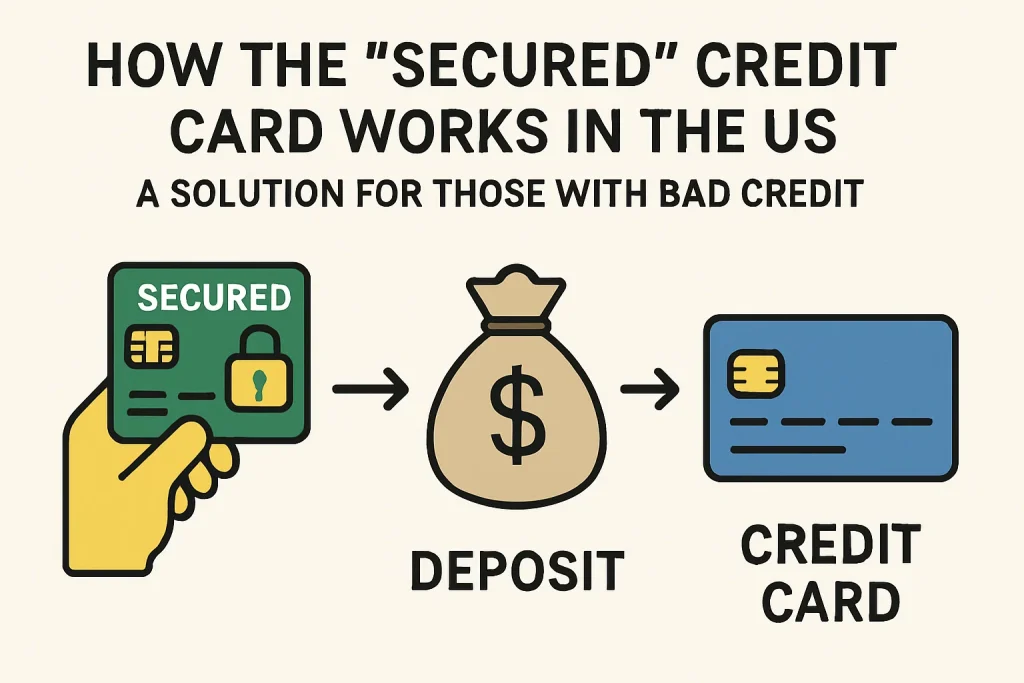In today’s financial landscape, understanding how a credit card functions, especially a secured credit card, can be crucial for individuals aiming to rebuild or improve their financial standing.
For those with poor credit history or no credit record, this type of card offers an accessible avenue to demonstrate responsible financial behavior. In this article, we will explore the workings and benefits of secured credit cards in the U.S., providing insights into their role as a potential lifeline for many.
Understanding secured credit cards

Secured credit cards are designed to help individuals establish or repair their credit score. Unlike traditional credit cards, which lend money based on the user’s creditworthiness, secured cards require an upfront deposit. This deposit typically matches the credit limit, minimizing risk for card issuers while providing a credit-building opportunity for users.
The idea behind a secured card is simple: use it responsibly to purchase goods and services, and pay off the balance on time. Over time, this behavior demonstrates to credit bureaus that you can manage credit effectively, potentially leading to an improved credit profile and access to unsecured credit options.
The mechanics behind secured credit cards
Upon approval, users must provide a security deposit, usually ranging from $200 to $3,000. This deposit acts as a safeguard, allowing the card issuer to cover any delinquent payments. Monthly usage of the card and timely repayments are reported to credit bureaus, which helps in building or rebuilding credit history.
This form of credit is ideal for individuals new to credit or those seeking to mend their credit reputation. By maintaining low balances and consistent payment records, users can eventually qualify for an upgrade to an unsecured credit card, further broadening their financial prospects.
The benefits and potential drawbacks of secured credit cards
While secured credit cards are beneficial, they do come with certain limitations. The primary advantage is the ability to build credit history, even with past financial struggles. Additionally, they often come with lower fees compared to unsecured cards offered to those with bad credit. However, the necessity for a security deposit can be a barrier for some.
Moreover, these cards might have higher interest rates and fewer perks than standard credit cards. It’s essential to weigh these factors carefully and choose a card that offers the best balance between cost and credit-building potential. Ultimately, the benefits often outweigh the drawbacks for those committed to improving their financial circumstances.
Maximizing the potential of secured credit cards
To fully harness the benefits of a secured credit card, users should keep a few strategies in mind. First, ensure all payments are made on time; this is pivotal in demonstrating creditworthiness. Next, keep the credit utilization low—ideally below 30% of the credit limit. This helps show that you are not overly reliant on credit.
It’s also wise to monitor your credit score regularly to track improvements. Over time, positive changes can lead to opportunities for credit line increases or even transitioning to an unsecured card, reflecting your newfound financial stability thanks in part to prudent use of a secured credit card.
Concluding thoughts on secured credit cards
In conclusion, secured credit cards can serve as a powerful tool for financial restoration. They offer individuals with poor or no credit history a chance to rebuild their creditworthiness through responsible usage. While these cards require a security deposit and might feature higher interest rates, the long-term benefits can significantly outweigh these initial hurdles.
By understanding how these cards work and adopting smart financial habits, users can improve their credit scores and broaden their access to financial opportunities in the future. It’s an empowering step towards a stable and financially secure future, proving that with the right actions, past credit pitfalls can be overcome.

